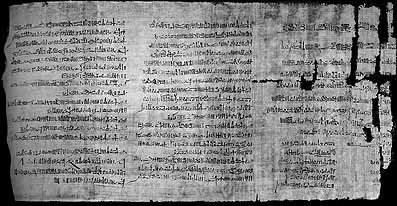|
|
 |
|
The Queens of Amenhotep I
Art and Architecture Amenhotep I had an interest in art and architecture and intiated elaborate building projects - such as the Karnak temple complex at Karnak (this element of Amenhotep I is once again documented, this time in the autobiography of Inheni the 'Chief of all Works at Karnak' - Theban tomb TT81). Many differing types of stone were bought to the site, a station was also designed by Amenhotep I for the bark of Amun. Amenhotep I was also the first pharaoh who separated his mortuary temple and tomb - these temples and tombs had been linked together since the Archaic Period, effectively 'advertising' the location of the tomb for tomb robbers.
The Death of Amenhotep I Amenhotep died in his forties, without an heir and so left the throne of Egypt to one of his military commanders - Tuthmosis I. The mummy of Amenhotep I was re-wrapped by priests of the 21st Dynasty - the wrapping was found to be so perfect that it has still not been unwrapped.
The Tomb of Amenhotep I Although Amenhotep I decided to try and hide his tomb it still did not escape the attentions of tomb robbers - fortunately his mummy was found in the cache of TT320. The exact location of his tomb is not known for certain, two possibilities are: an inscribed tomb at Dra Abu el-Naga, or a small undecorated tomb in the Valley of the Kings (KV39). There does exist a report from the tomb inspectors of the 20th Dynasty (Year 16 of Ramesses IX) who found his tomb already robbed:  "The eternal setting (horizon) of the King (Djeserkare), son of the sun (Amenhotep), which has 120 cubits if depth in its great hall, as well as the long passage which is on the north of the temple of Amenhotep of the garden (on which the chief Pasar of the town made his report to the monarch Khamaus, to the royal officer Nessuamen, to the scribes of the pharaoh, to the keeper of the house of the divine adoress of Amen-Ra King of the gods, to the royal officer Raneferkaempaamen, to the herald of the Pharaoh, to the supreme magistrates, saying, "The robbers have robbed it"); examined this day, it was found intact by the masons". |

